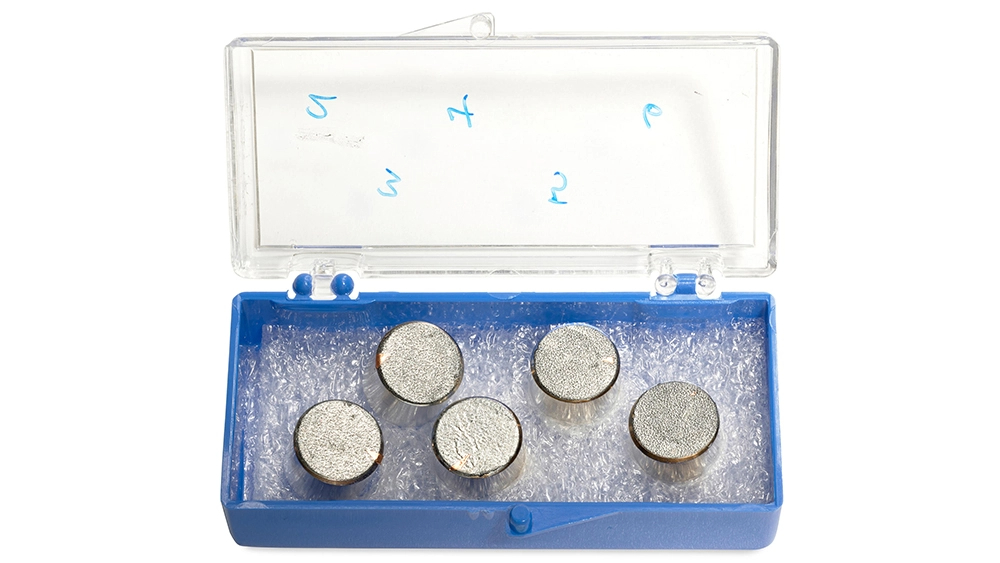While whisky, wine, watches and wheels are regulars in some of the world’s most illustrious auctions, very rarely do potential bidders get a chance to own something that’s quite literally out of this world. Hitting the auction block at Bonhams New York in just under a week will be a one-of-one piece of space history, trumping just about every other possible flex one could get their hands on with the first-ever moon samples collected by Neil Armstrong during the Apollo 11 Mission in 1969.
Four of the samples being auctioned off were collected by Armstrong when he became the first person to walk on the moon on 20th July 1969. The lot being auctioned off on 13th April contains five aluminium sample stubs, each topped with 10 mm of carbon tape containing actual moon dust from the Apollo 11 mission.
Each of the particles of moon were originally stored as scoops of dust and rock fragments in contingency sample bags, which were deemed “lost by NASA” in 2005 after they were stolen by a man named Max Ary. The thief, who was formerly a curator of the Cosmosphere Space Museum in Hutchinson, Kansas, assumedly stole the samples from the Apollo 11 mission archives and attempted to sell them, but was caught and found guilty before he was able to offload the precious cargo.

RELATED: SpaceX Will Launch A Spacewalk With An All-Civilian Crew This Year
The stolen goods were confiscated and sold to pay damages in a US Marshal auction in 2017, but the unnamed buyer sent the samples to NASA to test for authenticity. They were obviously confirmed to be the exact samples that Ary stole years prior.
Somewhere along the line, NASA opened the bags and placed the samples atop the hand-numbered stubs on which they currently lie.
The Neil Armstrong moon samples are expected to fetch a hammer price between US$800,000 (~AU$1 million) and US$1.2 million (~AU$1.6 million), which when you think about it is a fairly conservative estimate for something as indelible to human history as actual pieces scooped up by the first man to walk on the moon. Collectors regularly eat up these kinds of singular expressions of wealth at much higher prices, so it’s no stretch of the imagination to assume the aforementioned estimation is way off the mark.

Testing by lunar expert and geologist Professor Stephen J. Mojzsis this year confirmed that all of the moon samples in question were defined by numerous unique details. Although only four of the five samples being auctioned have been confirmed, by Mojzsis at least, to match the exact composition and textures of the particles from the Apollo 11 mission.
Does this make the fifth sample a fake, though? Not quite. As Mojzisin said in a statement released to the media:
“This suggests that the sample protocol was different in orientation and technique from the other samples.”
Bonhams is offering anyone who requests it the full report to confirm the authenticity of these moon samples.
















